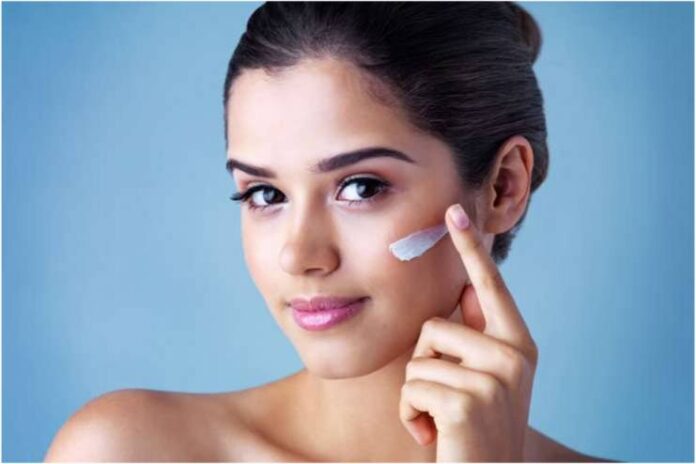Affiliate Disclaimer
Some links in this article are affiliate links. We may earn a small commission if you make a purchase through these links, at no extra cost to you. We only recommend products we find useful to our readersOur skin changes significantly as we age, requiring a more rigorous skincare regimen. Maintaining healthy skin overall and a young appearance becomes dependent upon proper skincare. Ignoring skin care can result in various problems, such as a dull complexion and lack of suppleness, as well as more wrinkles and age spots. This essay aims to highlight ten indicators that suggest you may not be caring for your skin properly as you get older. You can maintain the health and the vibrancy of your skin throughout the years by recognizing these symptoms and changing your skincare routine.
Sign 1: Increased Wrinkles and Fine Lines
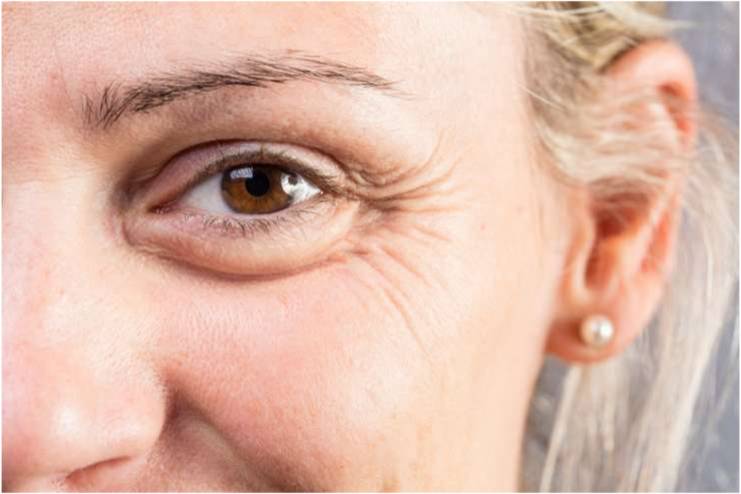
Among the most apparent indicators of aging skin are wrinkles and fine lines, frequently made worse by insufficient skincare. Although our skin naturally loses suppleness and collagen as we age, improper skin care and lack of moisture practices might hasten this process. When the skin is dehydrated and malnourished, wrinkles and fine lines appear more quickly.
Adequate hydration is required to maintain skin suppleness and halt the development of wrinkles and fine lines. Daily moisturizing keeps the skin supple and lessens the signs of aging by preserving the skin’s natural moisture barrier. Skin hydration can be significantly enhanced using a high-quality moisturizer with antioxidants and hyaluronic acid.
Add anti-aging products to your skin care regimen to combat these indications. Look for retinol, peptides, and vitamin C-containing serums and creams that help minimize wrinkles and increase collagen formation. Use a broad-spectrum sunscreen every day to protect your skin from UV ray damage and delay the formation of fine lines and wrinkles.
Sign 2: Dull and Uneven Skin Tone
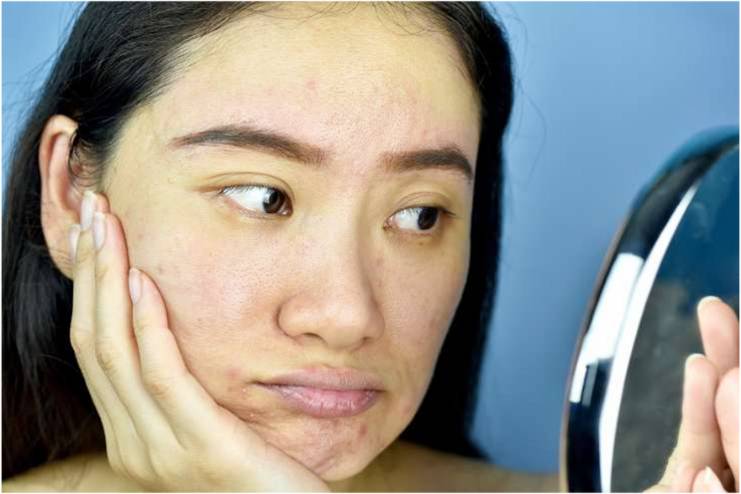
Poor skincare and incredibly insufficient exfoliation frequently result in dull skin and an uneven tone. Dead skin cells build up on the surface without regular exfoliation, resulting in a dull complexion and uneven pigmentation. This accumulation makes your skin look older and reflects less of its natural brightness.
Exfoliating your skin regularly is essential to keeping it radiant. Encouraging cell turnover and removing dead skin cells helps reveal younger, more vibrant skin underneath. Skin texture and tone can be markedly improved using exfoliating products, such as those containing beta hydroxy acids (BHAs) or alpha hydroxy acids (AHAs).
Brightening products can improve the radiance of your skin in addition to exfoliation. To balance out skin tone and give a radiant glow, look for serums and creams containing ingredients like the licorice root extract, vitamin C, and niacinamide. By using these products consistently and with frequent exfoliation, you can fight the indications of aging skin and keep your complexion looking bright and even.
Sign 3: Increased Dryness and Flakiness
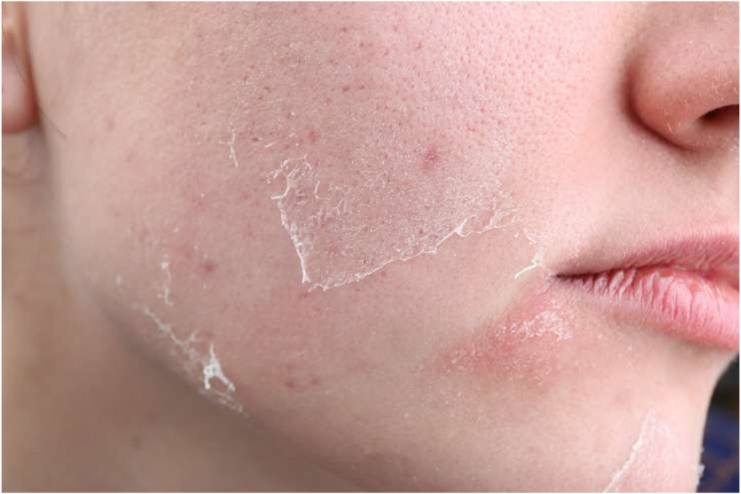
As it ages, skin becomes more prone to flakiness and dryness, especially if it is not properly cared for. Natural oil production tends to decrease in aging skin, which compromises the moisture barrier and makes the skin more vulnerable to environmental stresses. The result is dry skin, which frequently looks rough and flaky.
Hydration is crucial to fighting flakiness and dry skin. Adding hydrating products to your skin care regimen can help keep your skin supple and at optimal moisture levels. A mild cleanser and then a rich, moisturizing moisturizer can greatly improve skin texture. For superior moisture retention, look for products that contain hyaluronic acid, glycerin, and ceramides.
Consuming lots of water is also critical to maintaining proper hydration. For intense hydrating treatments, use deep-conditioning creams made for dry skin or overnight masks. These treatments provide an additional moisture boost, restoring and maintaining the skin’s natural moisture barrier and successfully reducing flakiness and dryness.
Sign 4: Dark Spots and Hyperpigmentation
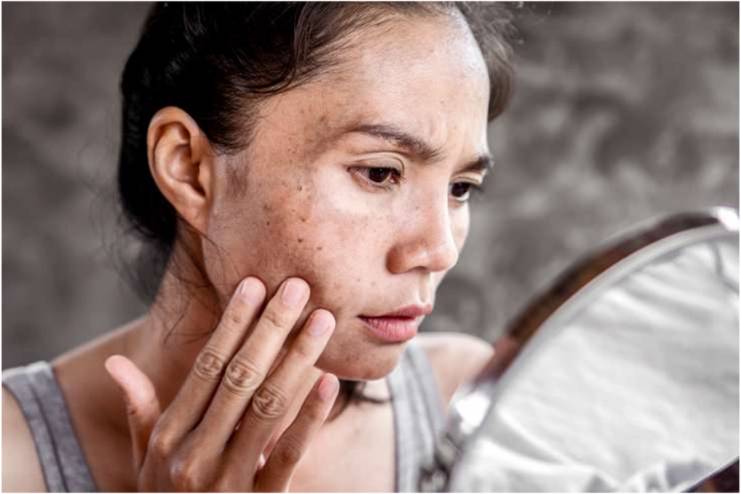
Hyperpigmentation and dark patches are typical indicators of aging skin, frequently brought on by improper skincare and sun protection practices. Extended exposure to ultraviolet radiation without protective gear can result in sun damage. Dark patches and uneven skin tone make the skin seem aged.
It is essential to use SPF every day to avoid hyperpigmentation. Broad-spectrum SPF sunscreen protects the skin from UV radiation, lowering the chance of sun damage and the development of dark spots. Even on cloudy days, it’s crucial to apply sunscreen in the morning and reapply it every two hours when in sunlight.
Use skincare products with brightening and exfoliating properties to treat and prevent black spots. Serums containing licorice root extract, vitamin C, and niacinamide can lighten existing spots and level skin tone. Furthermore, exfoliants containing AHAs or BHAs encourage cell turnover, which helps to reduce hyperpigmentation and preserve a more youthful, clean complexion.
Sign 5: Loss of Elasticity and Sagging Skin
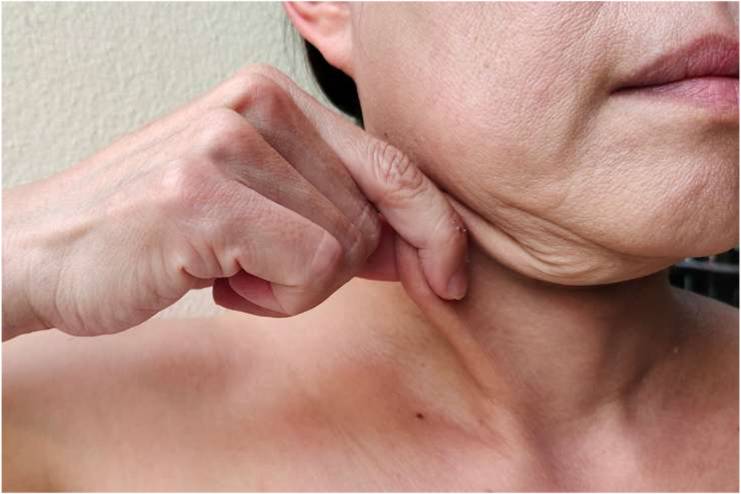
Loss of skin elasticity and sagging are common problems that occur as we age. Sometimes, this is due to our skincare routines needing to include more products that increase collagen production. The production of collagen, an essential protein that plays a role in preserving the skin’s firmness and flexibility, decreases with age. If you do not use items that stimulate the creation of collagen, your skin will grow more prone to sagging and lose its youthful resilience.
Incorporating firming solutions that stimulate the creation of collagen is essential in the fight against drooping skin. Retinol, peptides, and vitamin C are ingredients known to stimulate the production of collagen, which in turn improves the suppleness and the firmness of the skin. The consistent application of these products can assist in preserving a more youthful appearance and reducing sagging.
The first step for an effective skincare routine for firming and tightening the skin is to use a mild cleanser and then apply a serum containing chemicals that increase collagen production. To prevent the moisture loss and improve the skin’s suppleness, use a moisturizer that has a firming effect. In addition, consider introducing treatments such as facial masks or nightly lotions designed to tighten and firm the skin. When you use these specific products regularly, you may help restore the elasticity of your skin and reduce the amount of sagging that occurs, so maintaining a more youthful and firm complexion.
Sign 6: Increased Sensitivity and Redness
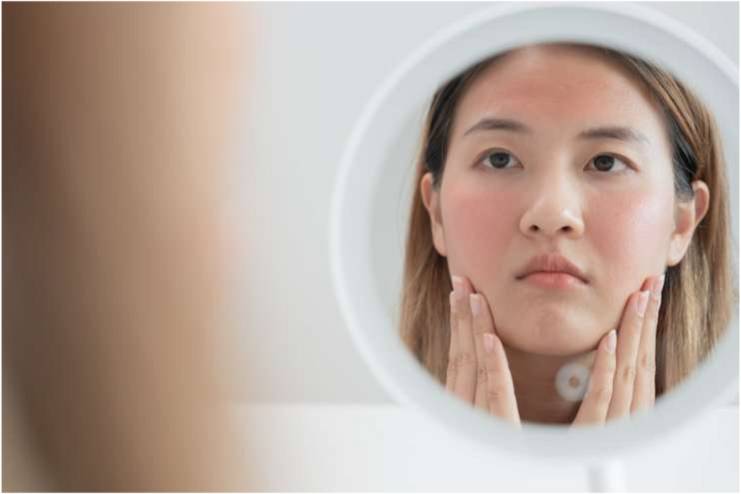
As we age, redness and sensitive skin can intensify, mainly if we don’t take adequate care of our skin. The skin’s protective layer can be removed by harsh products, the environment, and skipping a regular skincare routine, which can cause skin irritation and noticeable redness.
Taking care of sensitive skin requires using soothing and mild skincare products. Calendula, chamomile, and aloe vera are relaxing ingredients that can help lessen redness and discomfort. Choosing hypoallergenic and fragrance-free cosmetics also reduces the chance of escalating sensitive skin.
Start by cleansing with a mild cleanser that doesn’t remove the skin’s natural oils to soothe sensitive skin and lessen redness. To restore pH balance to the skin, use a calming toner afterward. Use a light moisturizing moisturizer that contains calming elements to seal in moisture and shield the skin’s protective layer. To further minimize redness, use a serum or treatment that has anti-inflammatory qualities, including niacinamide or green tea extract. Using these gentle products regularly will help soothe sensitive skin and preserve a balanced, healthy complexion.
Sign 7: Enlarged Pores and Rough Texture
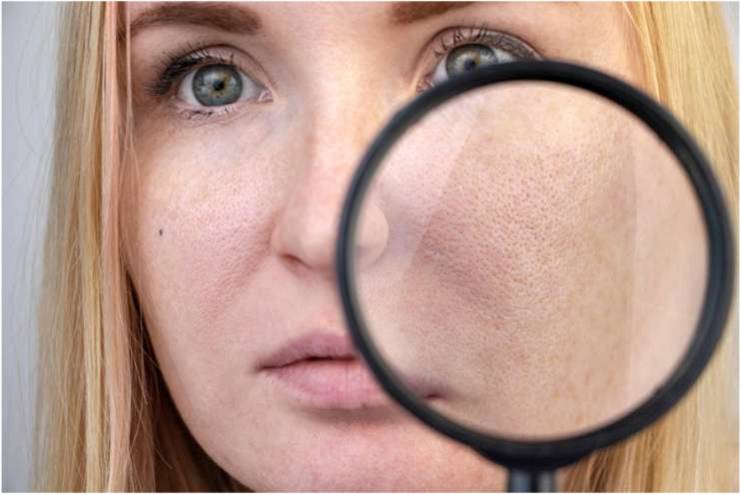
Over time, neglecting adequate cleansing and exfoliation can lead to larger pores and rough skin. The buildup of debris, oil, and dead skin cells on the skin’s surface can cause pores to clog and enlarge. Additionally, this accumulation can give the skin an uneven, harsh tone that makes it appear older than it is.
It is essential to clean your pores regularly to get rid of contaminants. A mild cleanser twice daily can help avoid pore congestion and maintain clean skin. Exfoliation is equally vital to your routine because it helps to remove the dead skin cells that can cause the skin to have a rough texture. Exfoliating 2-3 times a week with a moderate scrub or chemical exfoliant (such as AHAs or BHAs) can encourage smoother skin and reduce the visibility of enlarged pores.
If you want to smooth skin texture and refine pores, try to find skincare solutions designed to address these issues. Use a good toner that contains salicylic acid or witch hazel to help shrink pores and regulate oil production. Retinoids or niacinamide-containing serums can also aid in improving the texture of the skin by encouraging a more uniform surface and accelerating cell turnover. By using these products regularly in conjunction with a strict washing and exfoliation regimen, you will attain smoother, more radiant skin and minimize the appearance of enlarged pores.
Sign 8: Breakouts and Acne
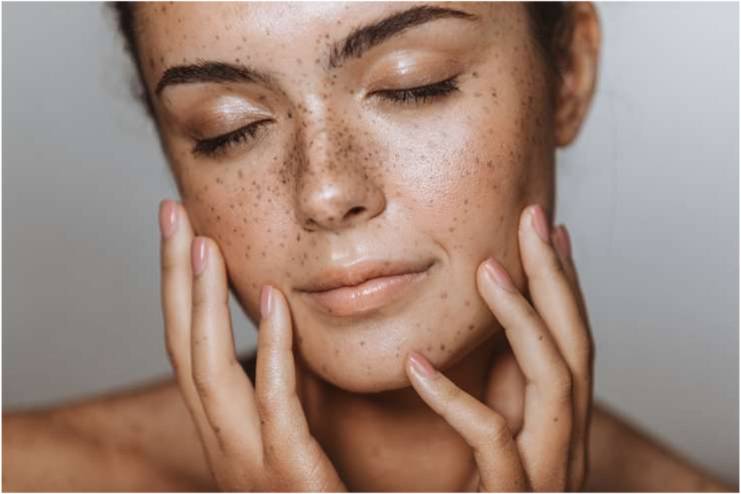
Neglecting adequate care can cause breakouts on even older skin. Contrary to popular belief, acne is not just a problem for young people; clogged pores and flare-ups can result from hormone fluctuations, stress, and poor skincare practices.
Keeping your pores clean is crucial to avoiding outbreaks. Frequent washing with a mild, non-comedogenic cleanser aids in getting rid of makeup, oil, and debris that can clog pores and cause acne. Steer clear of harsh cosmetics that deplete the skin of its natural oils because they might make breakouts worse.
It’s crucial to use acne treatments suited for aged skin. Look for the products with benzoyl peroxide or salicylic acid as components to help clear out pores and lessen bacteria that cause acne. Incorporate these treatments into your skincare routine on a regular basis to manage breakouts effectively.
Use lightweight, non-greasy moisturizers and serums that won’t clog pores for age-appropriate acne control. Choose moisturizers that provide moisture to the skin without making it overly oily. Speak with a dermatologist to find the ideal acne treatment regimen customized to your unique skin troubles and age-related changes. By taking a conscientious approach to skincare and choosing products made to address both acne and aging issues, you may effectively manage breakouts and retain smoother, healthier skin.
Sign 9: Lack of Radiance and Glow
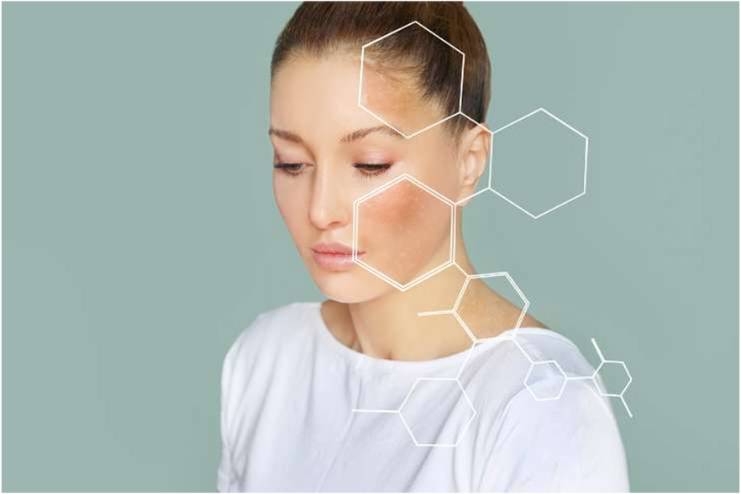
When aging skin is not adequately nourished and cared for, it can lose its natural brightness and luster. As we age, the skin accumulates dead cells on its surface because cell turnover slows down. It might lessen the complexion’s youthful brightness by making it seem lifeless and drab.
Restoring brightness requires using nourishing products that improve skin vitality and nourishment. Seek out skincare products enhanced with antioxidants, such as the vitamins C and E, to help prevent damage from free radicals and make you look younger. Hyaluronic acid and peptides are among the ingredients that help keep skin hydrated and enhance its overall texture, giving the appearance of increased luminosity.
Use a mild exfoliator to remove the dead skin cells and reveal younger skin underneath for a glowing complexion. Apply a moisturizing serum afterward to increase the skin’s natural radiance and moisture content. Applying a moisturizer with shimmer or light-reflecting particles can help give your skin a dazzling appearance.
Ensure you also eat a balanced diet high in antioxidants, drink lots of water, and get enough sleep to maintain a healthy lifestyle. These routines promote healthy skin overall and a radiant complexion. With regular care and the appropriate products, you may rejuvenate your skin and attain a glowing, youthful appearance.
Sign 10: Persistent Dark Circles and Puffiness
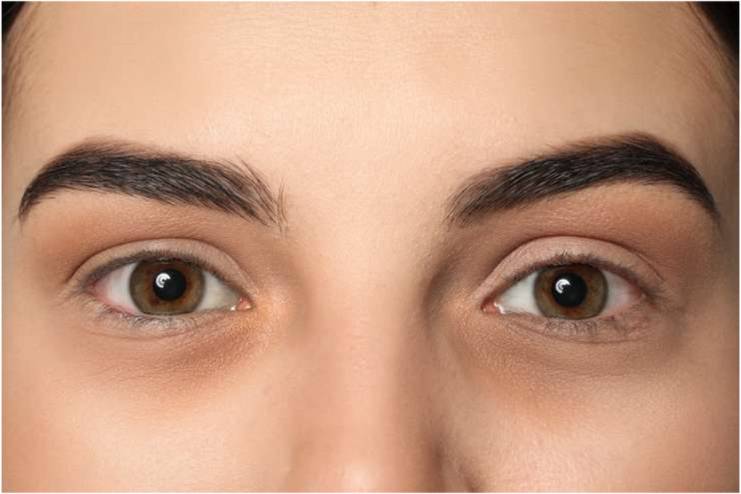
Poor eye care can worsen dark circles and puffiness as we age. Dehydration and sensitive eye skin make dark circles and puffiness possible. Insufficient sleep, stress, and genetics can cause dark circles. Lack of moisture and skincare worsens these issues, making skin dull and worn. Fluid retention from allergies, salt consumption, or poor lymphatic drainage can produce puffiness.
Addressing dark circles and puffiness requires specific eye creams and treatments. Find eye creams with caffeine, hyaluronic acid, and peptides. Hyaluronic acid and peptides fill the delicate skin around the eyes, while caffeine constricts blood vessels to relieve puffiness.
Use your ring finger to tap eye cream into the skin without pulling it to decrease dark circles and puffiness. Use moderate massage to promote lymphatic drainage and minimize fluid buildup. Cold compresses and eye masks can also constrict blood vessels and relieve puffiness.
Drink plenty of water and use an eye moisturizer to stay hydrated. Wear sunglasses and sunscreen every day to protect the delicate eye area. With these skincare tips, you can reduce dark circles and puffiness for a youthful appearance.
Conclusion
Maintaining healthy young skin as we age requires identifying and correcting the symptoms of inadequate skin care practices. Understanding these indicators, which include sensitivity, dullness, and wrinkles, will help you enhance your skincare regimen proactively. Maintaining consistency with a proper routine is essential. Over time, a focused skincare routine that includes washing, moisturizing, and applying the right treatments will significantly improve the condition and the appearance of the skin. Visit our blog for more in-depth skincare advice and product recommendations catered to your unique requirements if you want the best possible results.
In this Article















